|
The spurge family is large, having 218 genera and around 6,745 species. They have a worldwide distribution with most in the tropical zones where they exist as forbs, shrubs or trees. In North America, they primarily exist as forbs. Due to the fascinating phenomenon of convergent evolution, some species strongly resemble cacti. But they are far removed from the cactus family. Convergent evolution is the evolutionary process where species may show a strong anatomical resemblance yet are not related. They have ancestral backgrounds widely separate. The classic example is the Tasmanian wolf and the gray wolf that bare a strong resemblance, however the Tasmanian wolf is a marsupial and the gray wolf is a placental mammal. They have no kinship except very far back in early mammalian evolution. Flowering Spurge, Euphorbia corollata, is a high C-value species that exists as a small plant on Wafer Creek Ranch. It’s a somewhat shade tolerant perennial forb that has toxic sap. Flowering spurge seems to prefer well drained upland woodland settings, it has a deep taproot, and the plants are drought tolerant. Its range is the Midwest and throughout the eastern United States and southern Ontario. The flowers attract pollinating insects such as bees, wasps, flies and butterflies; and birds eat the seeds. The plant’s bloom period is summer and fall. Flowering Spurge, Euphorbia corollata Nettleleaf Noseburn, Tragia urticifolia, is a perennial forb that has a range almost completely restricted to the southern gulf coastal states from Texas eastward. On Wafer Creek Ranch it is almost always restricted to dry upland woodland sites where it occurs as a small plant. Noseburn causes itching when it comes in contact with the skin, hence its name. Nettleleaf Noseburn, Tragia urticifolia Texas Bullnettle, Cnidoscolus texanus is a high C-value perennial forb with stinging hairs, therefore touching it is not recommended. Its range is restricted to the Midwestern states of Texas, Louisiana, Arkansas, Oklahoma and Kansas. Insects such as bees and butterflies feed on the nectar of the showy white flowers, and birds eat the seeds. The seeds are edible for humans and were a part of the diet of Native Americans. Texas bullnettle has a deep taproot and is quite drought resistant. 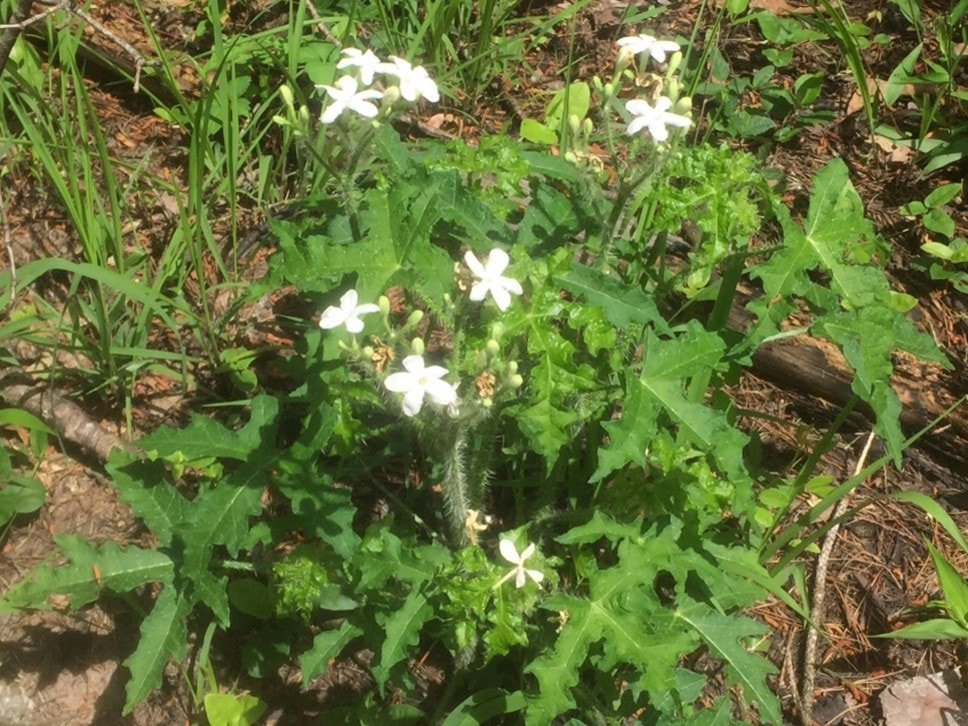 Texas Bullnettle, Cnidoscolus texanus Goatweed (Woolly Croton, Hogwort), Croton capitatus, is a highly weedy invader of disturbed sites. It is an annual plant with a velvety texture of the leaves and stems due to the plant’s hairs. The seeds are eaten by birds and the plant is host to the gray hairstreak and goatweed leafwing butterflies. The goatweed leafwing is a large, beautiful butterfly common in the fall on Wafer Creek Ranch, causing me to realize that goatweed, after all, has significant worth in the ecosystem. The range of goatweed is centered in the southern Midwestern states. Elsewhere farther east it becomes scattered and local. Goatweed (Woolly Croton, Hogwort), Croton capitatus Vente conmigo, Croton glandulosus, is an annual, sometimes perennial, forb preferring sunny locations but tolerates partial shade. I like vente conmigo but I’m not certain that I don’t like the name better than the plant. Vente conmigo is Spanish for “come with me.” Other names include tropical croton and doveweed. Its seeds, located in a capsule, are plentiful and numerous bird species eat them, especially doves. The plant also provides good cover for small mammals and birds. Vente conmigo’s range is South and Central America, Mexico and much of the United States. Vente conmigo, Croton glandulosus
0 Comments
Leave a Reply. |
Johnny Armstrong, Author
#Biodiversity advocate. Ecosystem Restorationist. Steward of an old-growth forest and woodland in northern Louisiana. #ForestFolkMatter #ScienceMatters Rescuing Biodiversity (publishing in June 2023) tells the story of Johnny's attempts at Wafer Creek Ranch to preserve a vanishing Louisiana ecosystem and restore the animal and plant species that once lived there.
“An avowed student of life and restoration ecology, Johnny Armstrong expertly teaches us how to restore an imperiled southern ecosystem based on deep research, firsthand experience, and delighted observation of the species that return to his beloved Wafer Creek Ranch. Driving his devotion is the alarming truth that loss of biodiversity poses a threat on par with climate change and his impassioned belief that society can alter that trajectory, one acre at a time.”
Cindy Brown, Executive Director Land Trust for Louisiana “Up there on your bookshelf between Tolkien and Watership Down is where this book belongs. As an anthropomorphic adventure that winds through the realm of animals possessing courage, savagery, perseverance, and ultimately wisdom in the face of mounting evil threats – humans disconnected from the natural world – the tale is relevant, if not necessary.”
Kelby Ouchley, Author Bayou Diversity: Nature & People in the Louisiana Bayou Country Find an Indie Bookstore
Archives
September 2023
Categories |
CONNECT WITH JOHNNY & THE FOREST-FOLK
JOIN US AT THESE SOCIAL NETWORKS
Shadowshine, An Animal Adventure
by Johnny Armstrong ISBN-10: 1771834609 ISBN-13: 978-1771834605 #ForestFolkMatter #BookstoRead #Fiction #Literature #LiteraryFiction #AnimalFiction |
|
Official Site of Shadowshine, An Animal Adventure ©Johnny Armstrong
Website Developed and Managed by Freelance Creative Support Services
Website Developed and Managed by Freelance Creative Support Services

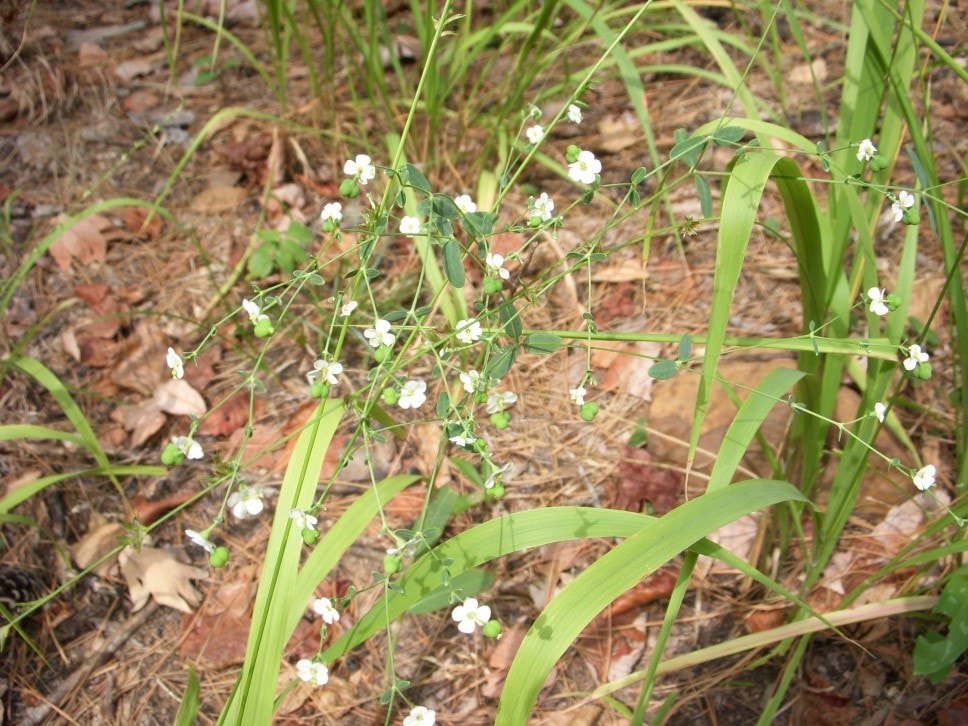
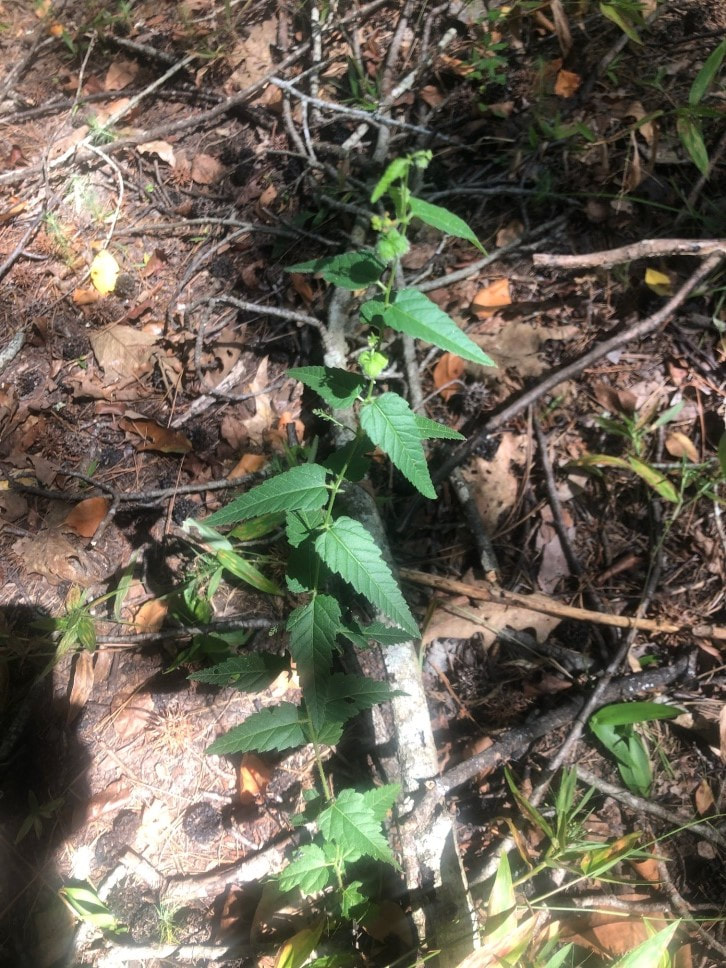
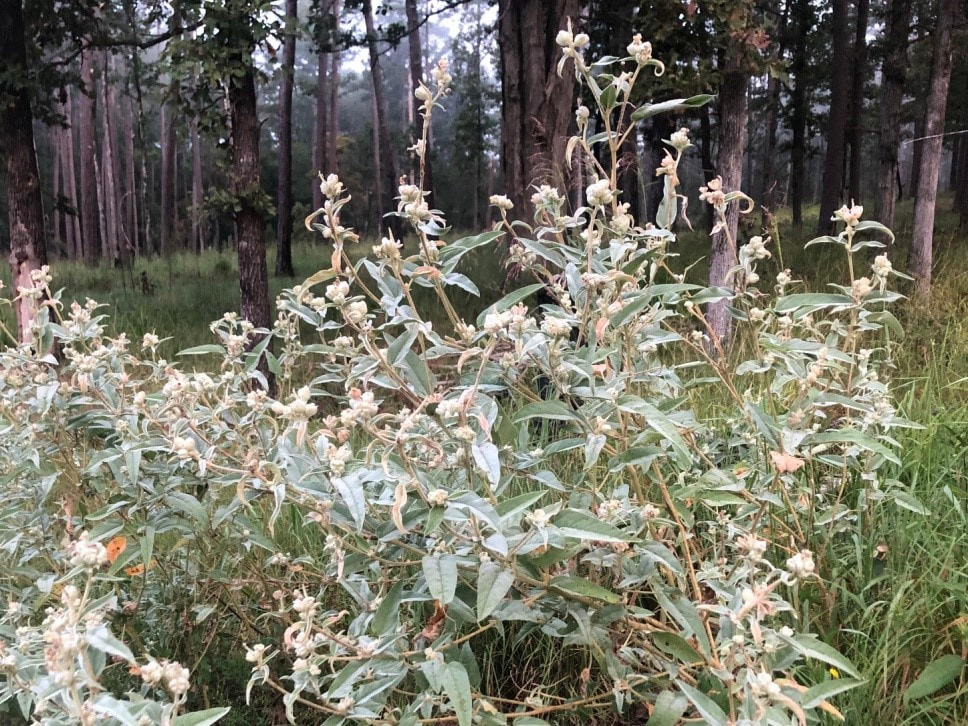


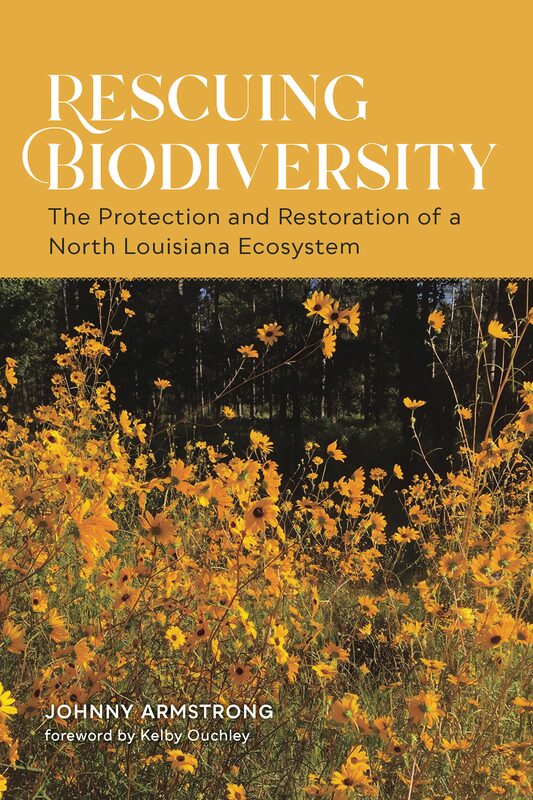
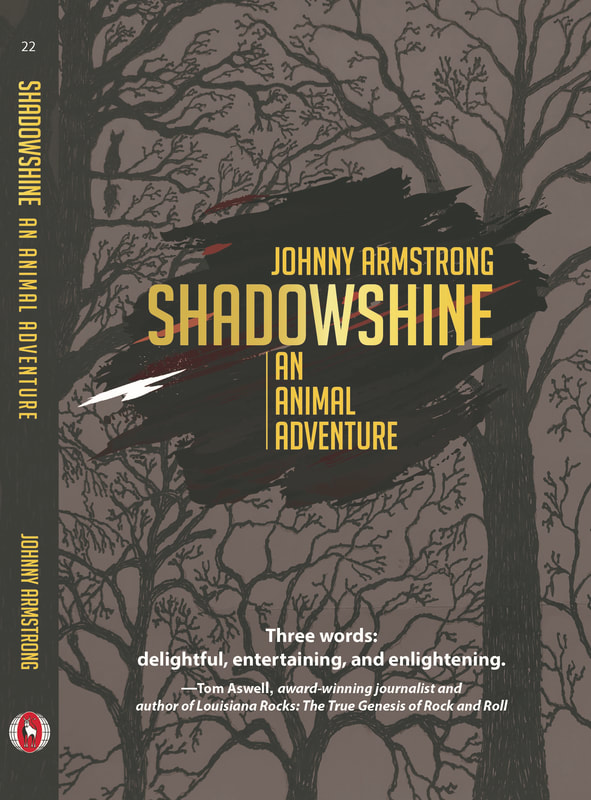

 RSS Feed
RSS Feed
